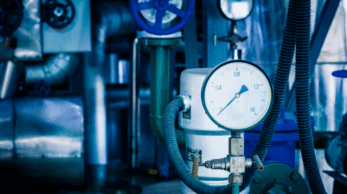Why is RCM crucial for modern industries?
In today’s industrial settings, where competitive pressure, regulatory constraints, and performance demands are escalating, mastering equipment failures and optimizing availability are strategic imperatives. Reliability-Centered Maintenance (RCM) stands out as a rigorous and systematic methodology for analyzing malfunction causes and designing targeted strategies to ensure both operational performance and cost-effective management.
A structured approach for critical challenges
RCM is based on a thorough analysis of equipment functions and the impacts of their failures.
Unlike generic maintenance approaches, it focuses on customizing maintenance plans based on asset criticality. This methodological approach offers several strategic benefits:
- Proactive failure anticipation: Identifying failure modes before they disrupt operations.
- Resource optimization: Tailoring interventions to the actual needs of the equipment, thus avoiding excess or insufficient maintenance.
- Regulatory alignment: Ensuring strict compliance with safety and quality standards, crucial in sectors like aerospace, energy, or pharmaceuticals.
RCM is more than a technical management; it embodies a strategic vision of maintenance, where each action is based on a precise analysis of operational and economic impacts.
Comparison with TPM: complementarities and differences

- Methodological focus: TPM involves all organizational levels to eliminate losses (breakdowns, downtime, defects) and empower operators. RCM, on the other hand, focuses on a detailed analysis of critical assets, prioritizing tasks based on the impacts of each failure.
- Targeted application: RCM is particularly relevant for complex and critical equipment, while TPM applies to the entire production system.
- Interoperability: These methodologies are complementary. For instance, a company might use TPM for overall operational efficiency and RCM for specific assets with major safety or performance implications.
By integrating these approaches, companies can achieve an optimal balance between operational performance and strategic robustness.
RCM implementation methodology: key steps
Implementing an RCM program involves several key steps:
- Selection of critical equipment: Identify assets whose failure could significantly impact safety, production, or costs.
- Functional analysis of equipment: Define each equipment’s primary and secondary functions and expected performances to identify potential functional failures.
- Failure mode identification: Analyze possible malfunction causes (wear, human errors, design flaws) to list scenarios that could compromise asset reliability.
- Impact analysis: Prioritize failures based on their criticality, considering safety, production, and cost aspects.
- Maintenance strategy definition: Establish specific tasks (preventive, predictive, corrective) tailored to each failure mode.
- Maintenance plan development: Organize defined tasks into a structured plan detailing intervention frequency, necessary resources, and responsibilities.
Integrating analytical tools
- Failure modes and effects analysis (FMEA): This systematic method helps prioritize actions based on the criticality of failures.
- Decision trees: These logical diagrams guide managers in selecting optimal interventions, making the process more transparent and reproducible.
Tangible benefits and strategic impacts of RCM
Operational performance optimization
RCM significantly reduces unplanned downtime through rigorous analysis and targeted maintenance plans. By focusing efforts on critical assets, it maximizes availability while cutting costs:
- Savings on unnecessary interventions: Human and material resources are allocated more efficiently, avoiding costs associated with irrelevant actions.
- Extended equipment lifespan: Targeted maintenance slows asset aging, reducing the need for premature replacement.
Enhanced safety and increased compliance
By identifying and mitigating risks associated with critical failures, RCM helps secure work environments while ensuring strict regulatory compliance. This is particularly relevant in sectors subject to stringent standards, where any non-compliance can lead to penalties or costly disruptions.
A strategic lever for competitiveness
Beyond operational benefits, RCM plays a key role in positioning companies in their markets. Proactive equipment management, combined with optimal utilization, supports growth ambitions and innovation, while boosting the confidence of partners and clients.
Technological evolutions and outlooks
Integration of advanced technologies
The advent of digital technologies is revolutionizing RCM. The Internet of Things (IoT), combined with artificial intelligence (AI), allows for real-time monitoring of equipment performance and unparalleled precision in anticipating failures. Computerized Maintenance Management Systems (CMMS) utilize this data to optimize the planning and execution of interventions.
Furthermore, digital twins represent a significant advancement. These virtual replicas of equipment enable the simulation of various maintenance scenarios and the assessment of their impacts before implementation.
Training and change management
Adopting RCM requires upskilling teams. Training in modern tools, such as predictive analysis software, is essential to ensure the success of this approach. Moreover, well-managed change processes help overcome internal resistance and mobilize teams around expected benefits.
A methodology at the heart of sustainable performance
Reliability-Centered Maintenance (RCM) has become an indispensable pillar for industries aiming to combine performance, safety, and competitiveness. By intelligently integrating it with approaches like TPM and leveraging emerging technologies, companies can develop decidedly modern maintenance strategies suited to the challenges of tomorrow. Thus, RCM transcends its initial function to become a major strategic lever, ensuring the reliability and longevity of industrial systems in an ever-evolving world.




